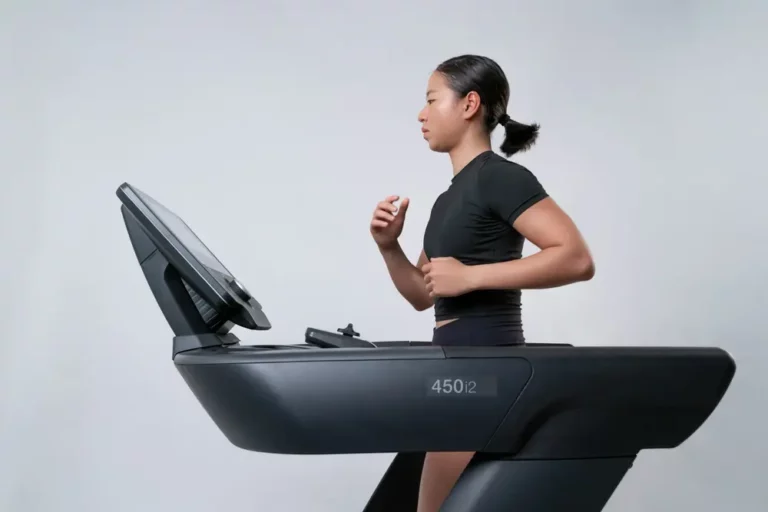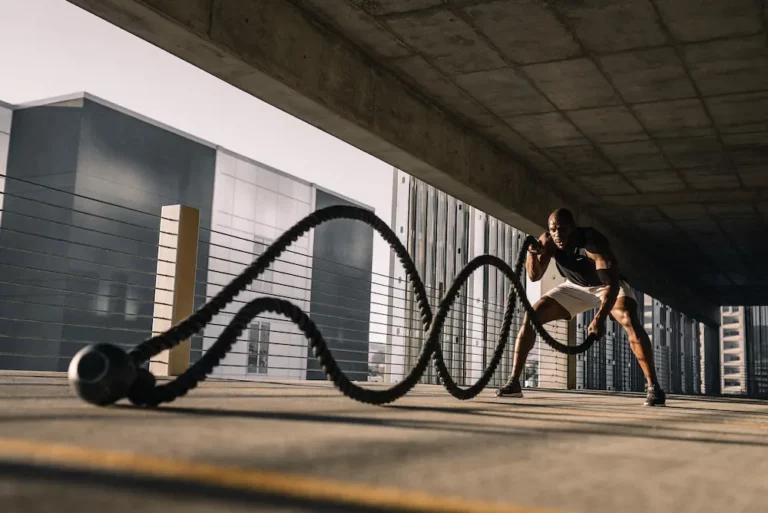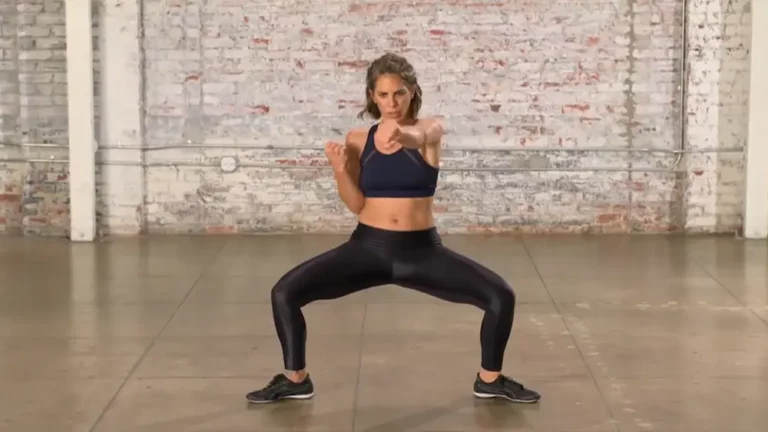Why Cardio Won’t Kill Gains: Balancing Muscle Growth & Cardio
I’ve heard it time and again, the age-old debate that’s been splitting gym-goers down the middle: does cardio kill your gains? It’s a question that’s sparked countless arguments in locker rooms and online forums alike. And let me tell you, I’ve been on both sides of that fence.
But here’s the thing, while many of us dread the thought of stepping onto a treadmill, fearing it’ll undo all our hard work in the weights room, it’s not as black and white as it seems. So, before you ditch the running shoes, let’s dive into what’s really going on.
Demystifying the Relationship Between Cardio and Muscle Building
As I’ve delved deeper into the intricacies of fitness and muscle development, I’ve uncovered that the debate surrounding cardio and its effects on muscle gains isn’t as straightforward as it seems. Over time, I’ve learned that cardiovascular exercise, when utilized correctly, can actually complement your muscle-building efforts rather than detract from them.
One pivotal aspect I’ve come to understand is the importance of Type and Timing in the cardio routine. Not all forms of cardio are created equal in the eyes of muscle preservation and growth. For instance, engaging in low-to-moderate intensity cycling for 20-30 minutes after a heavy leg workout can significantly reduce soreness and may even speed up muscle repair. This form of active recovery aids in flushing out metabolic waste from the muscles, thanks to improved blood flow.
Moreover, Capillary Density plays a crucial role in how effectively our muscles recuperate and grow. Increased capillary density ensures a more efficient delivery of nutrients and oxygen to muscle tissues, promoting faster recovery and growth. Fascinatingly, research indicates that individuals with higher capillary density experience expedited gains in muscle mass. This suggests that integrating cardiovascular exercises that enhance capillary density could potentially boost your muscle-building progress.
However, it’s crucial to recognize that not all cardio exercises will benefit your gains. Intense activities like high-intensity interval training (HIIT) could potentially hinder muscle growth if done immediately before strength training sessions. The key lies in finding a delicate balance and not letting cardio overshadow the primary goal of muscle building.
Understanding How Cardio Affects Muscle Growth
In the quest to build muscle, I’ve often come across the burning question: Does cardio kill your gains? Let’s dive deep and understand how cardio really interacts with muscle growth and if it’s truly the gains goblin many believe it to be.
Impact of Cardio on Lifting Performance
When I first included cardio in my routine, I worried it might sap my strength for lifting. The truth is that the impact of cardio on lifting performance largely depends on the type and timing of cardio performed. Conventional wisdom suggests heavy cardio sessions could potentially reduce your strength in subsequent lifting sessions, particularly if your body hasn’t fully recovered. This is because both cardio and lifting rely on different energy systems and muscle fibers, which can lead to a form of competition between the two if not properly managed.
However, it’s not all doom and gloom. Low-to-moderate intensity cardio, especially cycling or walking, doesn’t seem to significantly impact lifting performance when done on separate days or after lifting sessions. In fact, done right, it can even aid in recovery by promoting blood flow and reducing soreness.
Role of Cardio in Muscle Hypertrophy
Let’s talk about muscle growth or hypertrophy and where cardio fits into this picture. It’s common to hear that cardio might inhibit muscle gains due to increased calorie expenditure, which could undercut the calorie surplus needed for muscle gain. While there’s truth to the need for a calorie surplus for optimal gains, it doesn’t automatically mean cardio is detrimental to muscle hypertrophy.
In reality, cardio can play a complementary role in muscle building. For one, enhanced blood flow from cardio activities helps in the delivery of nutrients to muscles, which is crucial for repair and growth. Moreover, incorporating low-impact cardio can improve your overall endurance and work capacity, enabling you to handle more volume during your lifting sessions without necessarily impeding muscle growth.
Capillary density, which refers to the number of capillaries per muscle fiber, is another benefit of cardiovascular exercise that can support hypertrophy. More capillaries mean more blood, oxygen, and nutrients can reach the muscle, improving recovery and potentially speeding up growth.
Nutritional Factors in Cardio and Muscle Gain
Importance of Pre- and Post-Workout Nutrition
Understanding the pivotal role of pre- and post-workout nutrition is crucial for anyone trying to balance cardio and muscle gain. Pre-workout, my focus is on consuming carbohydrates and proteins. The carbs give me the energy I need to power through both my cardio and weightlifting sessions, while the protein helps in muscle protection. A simple banana or a slice of whole-grain toast with a scoop of peanut butter about 30 to 60 minutes before hitting the gym works wonders for me.
Post-workout nutrition, however, is where I believe the magic really happens. This is when your muscles are like sponges, ready to soak up nutrients for repair and growth. Fast-absorbing proteins, like whey, and a good source of carbs are my go-to. This combination helps replenish the energy stores I’ve depleted during my workout and starts the repair process for the minor tears my muscles have endured, especially after a rigorous cardio session. I’ve learned that timing is everything; aiming to refuel within 30 to 45 minutes post-exercise maximizes my recovery.
Balancing Macros for Optimal Muscle Recovery
When it comes to balancing macros for optimal muscle recovery, I’ve realized it’s not just about the protein. Yes, protein is key for muscle repair, but carbohydrates and fats play significant roles too. My strategy is to not overlook any of these macronutrients. Carbohydrates are essential because they replenish glycogen stores that get used up during both lifting and cardio exercises. Fats, though consumed in smaller quantities, are vital for hormone regulation, including testosterone, which is crucial for muscle growth.
| Macronutrient | Percentage of Daily Intake |
|---|---|
| Protein | 30% |
| Carbohydrates | 50% |
| Fats | 20% |
This ratio ensures that I’m getting enough protein to support muscle synthesis, carbohydrates to refuel my energy reserves, and fats for overall health. Balancing these macros has helped me not only maintain but also grow my muscle mass while incorporating regular cardio into my fitness regimen. I’ve found it helpful to track my intake using a food diary or an app, ensuring I’m meeting my daily requirements consistently. This approach keeps my body in a state of optimal recovery, ready for whatever workout I throw at it next.
Types of Cardio and Their Effects on Muscles
Cardiovascular exercise, often simply referred to as cardio, plays a pivotal role in any well-rounded fitness regimen. However, the impact of different types of cardio on muscle growth and retention can significantly vary. Let’s dive into two popular forms of cardio—Low-Intensity Steady-State (LISS) and High-Intensity Interval Training (HIIT)—and explore how each influences muscle dynamics.
Low-Intensity Steady-State Cardio (LISS)
When we talk about LISS, we’re referring to activities like walking, cycling, or swimming at a constant, relatively low intensity for an extended period. This type of exercise is often praised for its ability to enhance cardiovascular health without heavily taxing the muscles or the central nervous system.
Key Points about LISS:
- Promotes recovery: Gentle on the body, LISS can actually aid muscle recovery through improved blood circulation. This increased flow delivers essential nutrients to the muscles, expediting the repair process.
- Fat utilization: LISS predominantly uses fat as its energy source, preserving muscle glycogen and possibly contributing to fat loss without significant muscle degradation.
- Accessibility: It’s easy to start, making it ideal for beginners or those in recovery phases.
However, it’s important to note that while LISS can help maintain a base level of fitness and assist with recovery, it may not be the best choice for building muscle. This is primarily because it doesn’t challenge the muscles in a way that promotes significant strength or hypertrophy gains.
High-Intensity Interval Training (HIIT)
Moving onto HIIT, this form of cardio involves short bursts of very high-intensity exercise followed by periods of rest or low-intensity activity. It’s an efficient way to exercise, often burning a significant amount of calories in a relatively short period.
- Efficiency: HIIT sessions can be incredibly efficient, often lasting 20–30 minutes while offering substantial cardiovascular benefits.
- Afterburn effect: Thanks to the high intensity of the workouts, HIIT can induce excess post-exercise oxygen consumption (EPOC), meaning your body continues to burn calories at an elevated rate even after the workout is over.
- Muscle preservation: The intensity of the work intervals in HIIT can stimulate muscle fibers in a way that’s more akin to resistance training than traditional cardio, which may help in preserving—if not building—muscle mass.
On the flip side, the demanding nature of HIIT can be taxing on the body, requiring adequate recovery time to prevent overtraining and potential muscle loss. It’s a powerful tool in your fitness arsenal, but it must be used wisely to avoid exhaustion and the risk of diminishing returns on muscle gains.
Strategic Incorporation of Cardio in Muscle Building
When it comes to building muscle, I’ve found that the key isn’t avoiding cardio altogether but rather knowing how to strategically incorporate it into my routine. It’s all about finding the right balance and timing to complement my strength training, not detract from it.
Timing and Duration of Cardio Sessions
I’ve learned that the timing and duration of cardio sessions can make a big difference in their impact on muscle building. Here’s what works for me:
- Post-Weight Training: I prefer doing cardio right after my weight training sessions. I’ve noticed this helps in utilizing my body’s state, as I’ve already depleted my glycogen stores through lifting. Consequently, my body taps into fat reserves for energy during cardio without compromising muscle.
- LISS on Rest Days: On days I’m not lifting, I engage in Low-Intensity Steady-State (LISS) cardio, like brisk walking or cycling for 20-30 minutes. This not only aids in recovery by promoting blood flow but also doesn’t stress my muscles much.
- Duration Matters: Keeping my cardio sessions short but effective is my go-to strategy. I typically limit them to 20-30 minutes. This way, I’m able to enjoy the cardiovascular benefits without risking muscle loss.
Balancing Cardio with Strength Training
Finding the perfect equilibrium between cardio and strength training has been crucial for me. Here are a few strategies I employ:
- Prioritize Lifting: My primary focus is always on lifting. I structure my routine to ensure that strength training takes precedence, and I adjust my cardio accordingly. This helps me continually progress in my lifts without being hampered by excessive cardio.
- Adequate Recovery: I can’t stress enough how important it is to allow my body to recover. Mixing intense cardio sessions on the same day as heavy lifting can be counterproductive. I make sure to space them out and listen to my body, giving it the rest it needs.
The Myth of Cardio Killing Gains
Misconceptions and Realities
Let’s dive straight into one of the most prevalent myths in the fitness world – the belief that engaging in cardio exercises can sabotage your muscle gains. I can’t count the number of times I’ve heard gym buddies worrying about their hard-earned muscles turning to mush the moment they hit the treadmill. But is there any truth to this fear? Or have we all been buying into a myth?
First off, it’s important to acknowledge where this concern stems from. Many believe that cardio exercises, especially long-duration or high-intensity sessions, lead to muscle catabolism – where the body breaks down muscle tissue for energy. This idea could understandably send shivers down the spine of anyone aiming for muscle hypertrophy. However, the reality is far more nuanced.
The crux lies in how you incorporate cardio into your regimen. Excessive cardio, particularly without adequate nutrition, can lead to a caloric deficit steep enough to impact muscle recovery and growth. But this doesn’t mean all cardio will ‘kill’ your gains. In fact, when balanced correctly, cardio can be a powerful tool in your muscle-building arsenal.
How Proper Cardio Can Actually Enhance Muscle Growth
Now that we’ve debunked the myth let’s look at how cardio, when used appropriately, can actually foster muscle growth and not hinder it. The secret lies in understanding and executing a balanced approach to cardio and strength training – it’s all about the harmony between the two.
For starters, moderate cardio can actually improve muscle recovery through enhanced blood circulation. This increased blood flow accelerates the delivery of oxygen and nutrients to the muscles, which are crucial for repair and growth. Additionally, strategic cardio sessions can enhance your overall stamina and workout capacity, allowing you to push harder during those weightlifting sessions.
Another aspect often overlooked is the role of cardio in improving body composition. By aiding in fat loss, cardio can help in revealing the muscle definition you’ve worked hard for. But remember, moderation and balance are key. Here’s a quick insight into how I blend cardio with lifting:
- Keep cardio sessions short but effective; think HIIT or moderate-intensity cycling.
- Schedule cardio and lifting on separate days or at least at different times of the day to minimize fatigue.
- Monitor your calorie intake to ensure you’re feeding your muscles adequately – you’re aiming to fuel recovery, not compromise it.
By weaving cardio into your routine in a thoughtful manner, you’re not only safeguarding your gains but potentially enhancing them. It’s about smarter training, not harder, and definitely not about excluding one form of exercise out of fear. Balancing the intensity, duration, and type of cardio with an effective lifting program can elevate your fitness journey, pushing you closer to your goals, muscle mass included.
Practical Recommendations for Cardio Without Losing Muscle
Moderation and Intensity Control in Cardio
When I first delved into blending cardio with my strength training, I quickly realized the essence of moderation. It’s all about finding that sweet spot where I’m doing enough cardio to reap the benefits, like improved heart health and fat loss, without stepping into the territory where my muscle gains start to diminish. Moderation in cardio means sticking to a routine that complements my strength training rather than overshadows it.
Intensity control is another crucial factor. High-Intensity Interval Training (HIIT) has been a game-changer for me, allowing me to keep my cardio sessions short yet effective. I found that limiting these HIIT sessions to 20-30 minutes and focusing on low to moderate-intensity activities on my non-lifting days helped prevent muscle loss. This way, I’m pushing my cardiovascular limits without draining the energy reserves needed for muscle repair and growth.
Integrating Cardio into a Muscle-Building Regimen
Integrating cardio effectively into a muscle-building regimen has been like solving a complex puzzle, but I’ve discovered some strategies that work well for me. First, it’s vital to time my cardio sessions strategically. I prefer doing cardio on my rest days from lifting or after my strength training sessions rather than before, ensuring I have the maximum amount of energy to commit to lifting weights.
Another approach I’ve found beneficial is to view cardio and strength training as complements rather than competitors. By scheduling my cardio and lifting on separate days or parts of the day, I reduce the risk of one interfering with the other. For example, I might do a lifting session in the morning and save a short, brisk walk or a cycle for the evening.
I also pay close attention to my diet, ensuring I’m consuming enough calories to support both my cardio and lifting efforts. A well-balanced diet rich in proteins, carbohydrates, and fats fuels my workouts and aids in recovery, making it possible to enjoy the benefits of both worlds without sacrificing my gains.
Conclusion
It turns out that the idea cardio kills gains is more myth than fact. With the right approach—balancing your cardio and strength training, paying close attention to your nutrition, and timing your workouts wisely—you can actually use cardio to your advantage. It’s all about finding that sweet spot where you’re pushing your body enough to see results but not so much that you hinder muscle growth. Remember, the key is moderation and strategic planning. Keep your cardio sessions effective yet concise, and always fuel your body with the right nutrients. By doing so, you’re not just working towards a stronger heart but also sculpting the muscular physique you’re aiming for. Let’s put the myth to rest and embrace cardio as a valuable ally in our fitness journey.







